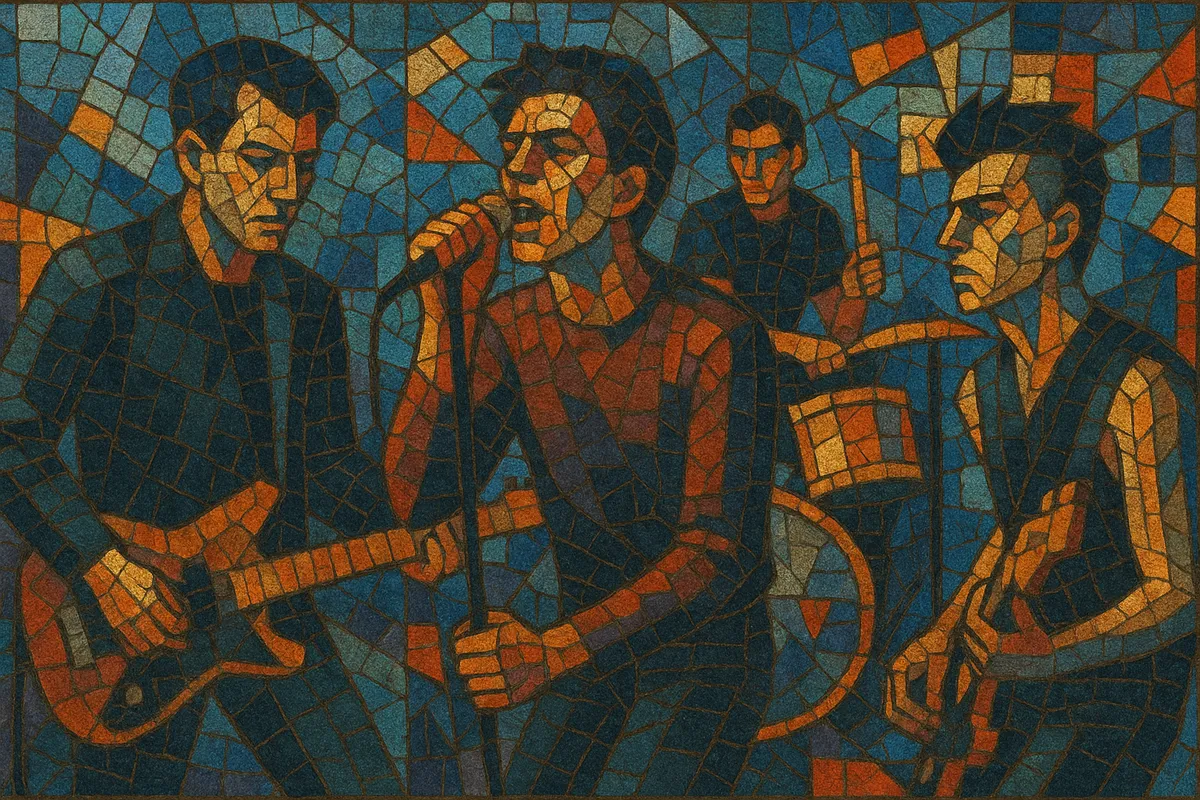
Yugoslav new wave (Novi val) was a regional variant of the global new wave and post‑punk movement that took shape at the turn of the 1980s in the Socialist Federal Republic of Yugoslavia. It blended punk’s immediacy with art‑school experimentation, minimalist synth textures, reggae/ska rhythm accents, and sharp, irony‑laced lyrics.
Centered around the scenes in Zagreb, Belgrade, Ljubljana, and Sarajevo, the movement benefitted from Yugoslavia’s comparatively open cultural policy within socialist Europe, active youth media, and strong domestic labels. The result was a vibrant, modern pop/rock language that was both cosmopolitan and distinctly local, capturing urban life, humor, and social commentary in Serbo‑Croatian and Slovenian.
Yugoslav new wave emerged as punk and new wave spread across Europe and North America. In non‑aligned, socialist Yugoslavia, youth magazines (e.g., Polet, Mladina, Džuboks), student radio, and state labels provided unusually permissive infrastructure for Western‑influenced music. Early punk sparks in Ljubljana (Pankrti) and Rijeka (Paraf) set the stage for a broader, more stylistically diverse new wave.
Around 1980–1981, the scene crystallized across key urban centers: Zagreb (Azra, Haustor, Film, Prljavo kazalište), Belgrade (Idoli, Šarlo akrobata, Električni orgazam), and others. Seminal compilations—especially Paket aranžman (1981)—codified the sound and ethos: angular guitars, catchy but unconventional song forms, witty and modernist lyrics, and the integration of reggae/ska and synths.
Jugoton (Zagreb) and PGP RTB (Belgrade) released a steady stream of albums, while festivals, fanzines, and TV/radio shows amplified the movement. The music balanced danceable grooves with art‑punk experimentation and literate, sardonic takes on everyday life and social realities.
As bands matured, some leaned toward art pop, synth‑pop, and post‑punk atmospherics. Belgrade’s underground expanded (e.g., Artistička radna akcija compilation), while Sarajevo developed its own pop‑rock sensibility, giving rise to related currents that borrowed new wave’s stance and humor.
By the mid‑1980s, the original wave receded as styles fragmented into post‑punk, synth‑pop, and alternative rock. Nonetheless, the movement’s aesthetic—clever lyricism, urban modernity, and lean, rhythmic arrangements—became the template for subsequent ex‑Yugoslav indie/alternative scenes. Its recordings remain cultural landmarks, and the scene’s influence resurged during the post‑punk revival and in the "nova srpska scena" and other regional indie movements.
Aim for a balance of punk energy and art‑pop intelligence: concise songs with memorable hooks, but room for angular riffs, offbeat accents, and lyrical wit. Keep arrangements lean and rhythmic so the vocals and text shine.
Use simple triads and dominant‑flavored progressions, occasionally dipping into modal colors (Mixolydian/Dorian) typical of post‑punk/new wave. Vocal melodies should be memorable, slightly talk‑sung or ironic when needed, with call‑and‑response choruses.
Write in the vernacular, with urban imagery, irony, social commentary, and wordplay. Keep verses observational and clever; choruses concise and slogan‑like. Avoid heavy-handed messaging—let humor and ambiguity do the work.
Adopt an energetic yet artful stage presence; fashion and visuals matter (clean lines, modernist minimalism). Keep tempos brisk, transitions sharp, and dynamics clear so lyrical nuances remain audible.

